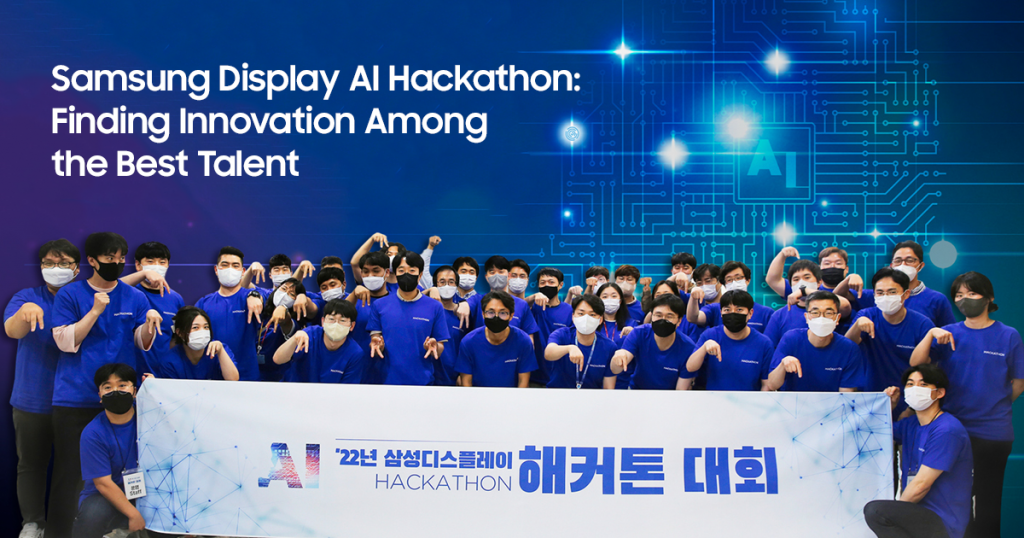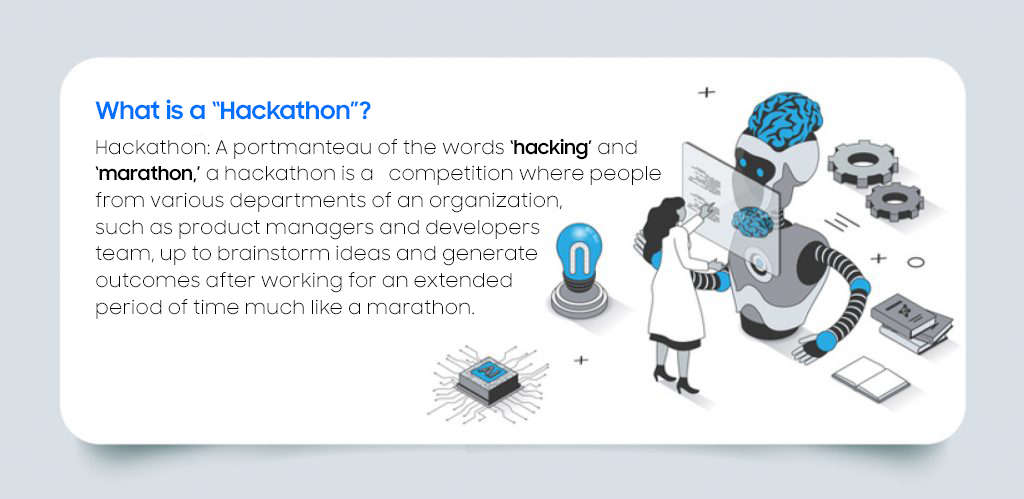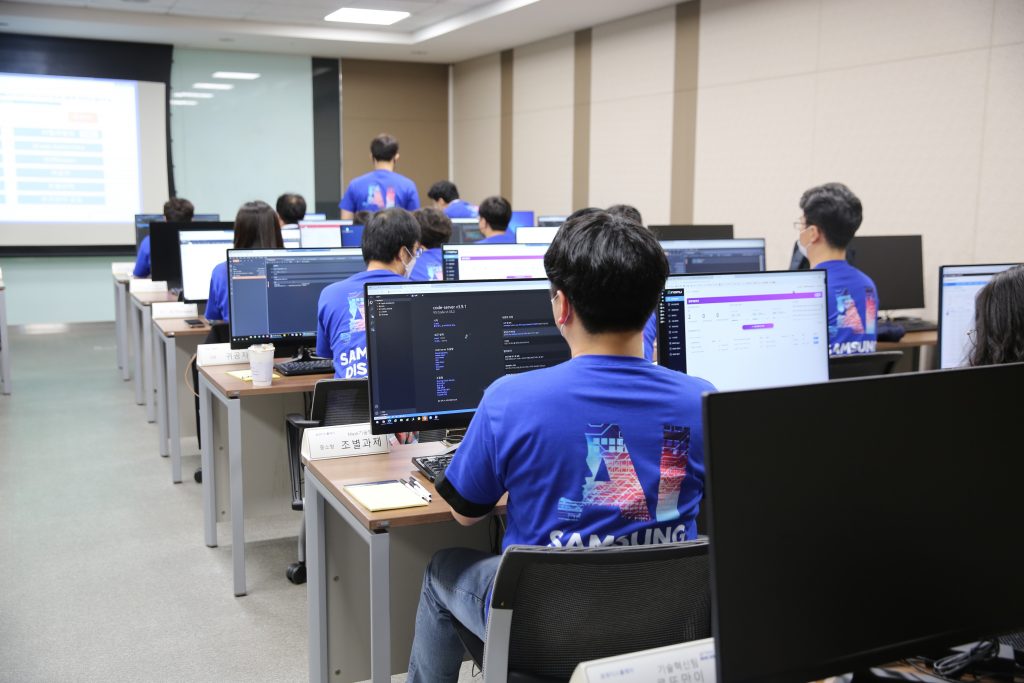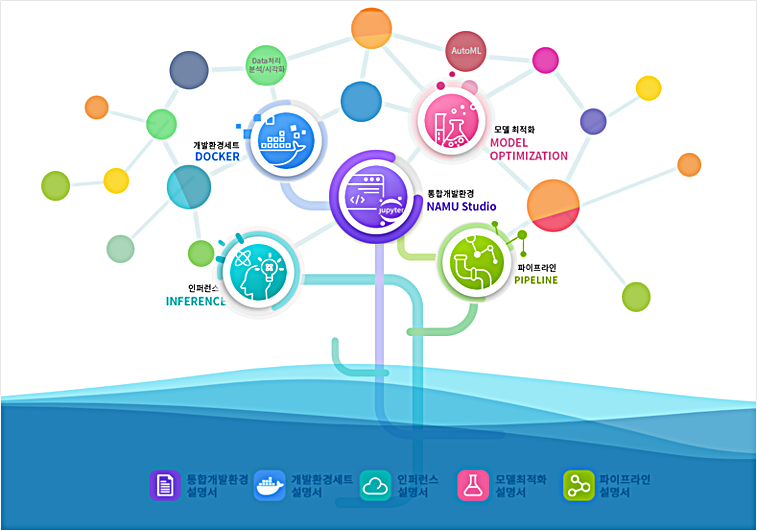
Today, the importance of artificial intelligence in displays is growing more than ever. Samsung Display has taken a wide range of actions to integrate AI technology into displays, including the introduction of an internal AI certification program and a talent training program. Such efforts have resulted in AI technology integrated into the development, manufacturing, and inspection process of displays and the company continues to amplify AI’s presence in various areas.
On June 13 and 14, Samsung Display held its very first AI hackathon to provide the members of the company with a platform to compete with their abilities and expertise in AI, designed to promote awareness of advancing AI technology. Contestants were given, on the spot, assignments to tackle with their knowledge and skills in AI in fierce competition. Let us take you through the highlights of the event filled with enthusiasm and energy!
Intense Competition in the Midst of Festivity

The hot summer heat could only be matched by the intensity felt in the heat of the competition among Samsung Display employees gathered at Samsung Display’s Asan Campus, where the internal AI hackathon was held.

64 individual participants in 24 teams participated in this contest. Winning teams for the two submission categories (Image and Tabular) were selected after eight hours of fierce competition.

Wearing the blue t-shirts specially designed for Samsung Display’s first AI hackathon, participants filled the venue with their fiery determination. The hackathon was kicked off by the opening speech by Director Roh Cheol lae, Corporate Executive Vice President of the Mechatronics Research Center, followed by the assignment for each category. Participants were asked to find an optimal AI model in a given situation to develop the best performance indicators.
On June 13th, participants who chose ‘Image’ as their hackathon category competed while participants who chose ‘Tabular’ gathered on June 14th. For the ‘Image’ category, participants were asked to develop an object detection model identifying and determining defects based on the images of cell process inspection provided. For the category of ‘Tabular’, the challenge was to develop a classification model for defects based on past data on the rare defects found in the production process.

While some of the teams seemed thrown off by the unexpected assignment, others quickly gathered in the ideation lounge accessible next to the main hackathon event hall to discuss ideas. For the speed of brainstorming and idea discussion, which are crucial to a hackathon, AI-related books and resources were prepared in the ideation lounge along with snacks so that the contestants could focus on collaborating with their team members to generate ideas.
The Twists and Turns at the Hackathon

The AI hackathon was especially special since Samsung Display’s AI platform NAMU (short for ‘Next-generation AI Machine Learning Platform for U’) was used by the contestants.

NAMU was launched in October 2021 with the aim of building Samsung Display’s own AI development platform by integrating complex AI development environments. After its launch, the platform has been used in various ways by engineers who carry out AI development projects. NAMU has been serving as a well-integrated environment for AI development and facilitated the organization of this year’s AI hackathon, where the skills and knowledge of individual employees could be evaluated fair and square.
After the ideation meeting, the participating teams began developing their respective AI model using NAMU, quickly filling up the event hall with their intense energy. Contestants gathered back at the hall after the lunch break before a major announcement was made.

It was the interim scores, scheduled to be announced at 1 p.m. The interim scores were calculated based on the models submitted and gave the teams an opportunity to see how the models functioned and where in their models they could make improvements. Scores were announced with rounds of applause congratulating the top-ranking team.

Two hours later, the second interim score was announced, when the first and second place were switched from the initial interim results. The ranking was a close call, making the final outcome unpredictable. In the Image category, team ‘Visionthone*’ led the competition, while team ‘Corinyi**’ was at the top in the Tabular category.
*Visionthone: Combination of ‘Vision’ and ‘Marathon’, meaning that the team put a lot of effort on improving the performance of the vision inspection for a long time like a marathon
**Corinyi: Combination of ‘Coding’ and ‘Eorinyi' (Korean word for 'Child'), meaning someone who just started learning coding

Contestants were given a relatively short amount of time compared to regular hackathons, heating up the competition and increasing the unpredictability of the results. No matter how great the performance of a model was during the interim assessments, the final result is determined based on the validation of the overall data — which means that the final rankings could be overturned completely. At 4:30 p.m., when the hackathon was coming to a close, many of the teams were still intensely focused on their assignment. After all the teams submitted their work, Kim Jaewon, Corporate Vice President of the AI Team closed the event with his speech.
After internal review, AI Hackathon winners were finally announced: Team Visionthone for "Image" category and Team Korinyi for "Tabular" category!
"Can't explain how happy we are about winning the first hackathon. With this competition as a starting point, much support would be appreciated in having more AI presence in our workplace."
– AI T/F Lim Sanghoon (Team Visionthone)
"Progress made during the hackathon was deeply meaningful; we hope to continue creating value and contributing to the company's growth."
– Mobile Display Inspection Technology Team Yang Heejune (Team Corinyi)
The first hackathon of Samsung Display was a smashing success despite it being an inaugural event. It was a great opportunity to see Samsung Display’s capabilities to generate great outcomes in business using AI.
Rankings will be tabulated as it is a competition after all, but the enthusiasm and hard work of every participant towards AI cannot be measured by awards and scores. We hope that the hackathon will serve as a great springboard for enhancing Samsung Display’s capabilities in AI, building on the great outcomes that Samsung Display has achieved over the years through AI.

